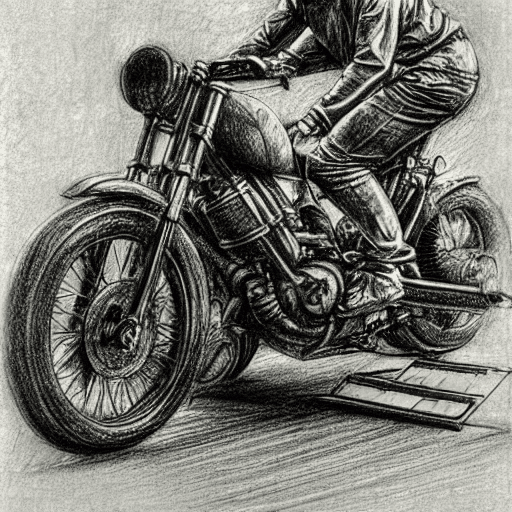Motorcycle suspension is essential for maintaining tire contact with the ground and ensuring stability and control. Without proper suspension, tires can lose traction, leading to unsafe riding conditions. Suspension systems use a combination of springs and dampers to absorb road imperfections and isolate the rider and chassis from them.
On-road suspension systems are designed to minimize the impact of potholes, bumps, cornering, and acceleration/deceleration forces. Off-road suspension systems, on the other hand, are built to handle rough terrains, including roots, rocks, jumps, and ledges.
Basic motorcycle suspension lacks adjustability and is suitable for general riding conditions. However, premium suspension systems offer tunability to match the rider’s weight and specific riding style. Different types of motorcycles have varying suspension needs. For example, cruisers and dual-sport bikes have different requirements compared to dedicated sportbikes.
Adjustability in suspension systems can include ride height adjustment under load, fine-tuning of spring compression and rebound rates, and preloading of spring tension to accommodate different riding scenarios such as carrying a passenger or luggage.
Springs are coiled steel wires that allow the motorcycle wheel to move independently from the chassis. They compress or stretch in response to external forces. The spring rate measures the force required to compress the spring a certain distance and can vary depending on factors such as material thickness and the number of coils. Linear rate springs offer consistent resistance throughout their travel, while progressive springs require increasing force for the same amount of travel.
Dampers, or shock absorbers, work in conjunction with springs to control their movement. They use hydraulic fluid to slow down and regulate the spring action. Dampers consist of a piston with passages and restrictions through which the hydraulic fluid flows. When the motorcycle encounters a bump, the dampers slow down the compression and rebound of the springs as the fluid travels through the passages.
Compression damping slows down the spring compression when encountering a bump, while rebound damping controls the spring expansion as it returns to its natural state. Some motorcycles have both high and low-speed adjustments for compression and rebound damping, allowing for fine-tuning of suspension behavior in various riding conditions.
There are different types of suspension setups, such as damper rod and cartridge forks, each offering different levels of adjustability, effectiveness, and complexity.
Sag is the percentage of suspension travel utilized while the motorcycle is stationary. Proper sag adjustment is crucial for optimal performance. Preload is the amount of tension on the springs when the bike is at rest and can be adjusted to accommodate different riding scenarios. Increasing preload reduces sag, while decreasing preload increases sag.
Front suspension systems use suspension forks, where both springs and dampers may work together within each fork leg or have separate functions in each leg. The front wheel axle attaches to the lower end of the suspension fork, while the triple tree secures the top end.
Rear suspension systems vary depending on the motorcycle design. They can feature a heavy-duty coil wound around a damper with external adjustments for preload and damping. Some motorcycles use dual rear shocks mounted between the frame and swingarm, while others employ a linkage and single-shock system.
Overall, motorcycle suspension plays a vital role in ensuring safety, stability, and comfort while riding, and choosing a suspension system that suits your specific needs and riding style is essential. Consulting with experts or motorcycle manufacturers can provide further guidance in selecting the right suspension setup for your motorcycle.
Motorcycle suspension is a critical component for ensuring a smooth and controlled ride. It serves several purposes, including:
Tire Contact: The primary goal of suspension is to keep the motorcycle’s tires in contact with the road surface. This maximizes traction and allows the rider to maintain control in various riding conditions.
Absorbing Impact: Suspension systems are designed to absorb the impact of bumps, potholes, and other road irregularities. By doing so, they minimize the transfer of these forces to the rider and the rest of the motorcycle, providing a more comfortable and stable ride.
Handling and Stability: Proper suspension setup contributes to the motorcycle’s handling and stability. It helps maintain stability during acceleration, deceleration, and cornering, allowing the rider to navigate curves and turns with confidence.
Weight Distribution: Suspension also plays a role in distributing the weight of the motorcycle and its rider. By adjusting the suspension settings, such as preload and damping, the rider can optimize weight distribution for different riding conditions and loads.
Braking Performance: Suspension affects braking performance by keeping the front and rear tires in contact with the road during braking. This improves braking efficiency and prevents the motorcycle from diving excessively or losing stability.
Rider Comfort: A well-tuned suspension system reduces the amount of vibration and harshness transmitted to the rider, enhancing overall comfort during long rides.



